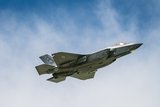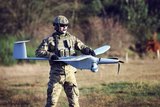Northrop Grumman delivers ESPAStar bus for US Air Force NTS-3 Mission
Northrop Grumman announced on 1 July the successful delivery of an ESPAStar-D spacecraft bus to L3Harris.
The platform supports the Navigation Technology Satellite-3 (NTS-3) mission for the Air Force Research Laboratory set to launch from Cape Canaveral in 2022.
According to a Northrop Grumman statement, the ESPAStar-D is built to provide affordable, rapid access to space and can accommodate combinations of hosted and separable experimental payloads on six common and configurable payload ports.
The bus utilizes an Evolved Expendable Launch Vehicle (EELV) Secondary Payload Adapter (ESPA) ring as its primary structure, allowing multiple ESPAStars to be stacked together on a single launch vehicle. The platform can support missions in geosynchronous orbit (GEO), low Earth orbit (LEO) and medium Earth orbit (MEO).
Blake Bullock, vice president, National Security Space, Tactical Space Systems, at Northrop Grumman, said the ESPAStar platform provides solutions for ‘customers seeking a modular, cost-effective and highly capable spacecraft bus for hosting technology development and operational payloads’.
The experimental NTS-3 payload is designed to augment space-based position, navigation and timing for warfighters and features a modular design capable of supporting various mission needs.
In addition to the NTS-3 mission, Northrop Grumman is partnering with the U.S. Air Force Space and Missile Systems Center (AFSMC) in their mission to deliver resilient and affordable space capabilities with the production of three ESPAStar platforms for Long Duration Propulsive Evolved Expendable Launch Vehicle (EELV) (LDPE) missions. LDPE-1 is scheduled to launch in 2021 with the Space Test Program 3 mission.
More from Digital Battlespace
-
![Babcock nears first customer for Nomad AI translation tool]()
Babcock nears first customer for Nomad AI translation tool
Nomad can provide militaries with real-time intelligence, saving critical time on the battlefield.
-
![AUSA 2025: Israel’s Asio Technologies to supply hundreds of improved Taurus tactical systems]()
AUSA 2025: Israel’s Asio Technologies to supply hundreds of improved Taurus tactical systems
Taurus operates alongside the Israel Defense Forces’ Orion system which supports mission management across tens of thousands of manoeuvring forces, from squad leaders to battalion commanders.
-
![AUSA 2025: Kopin pushes micro-LED plans as China moves faster]()
AUSA 2025: Kopin pushes micro-LED plans as China moves faster
The plan for the new displays follows fresh investment in Kopin’s European facilities by Theon and an order for head-up displays in fielded aircraft, with funding from the US Department of Defense.
-
![AUSA 2025: Persistent Systems to complete its largest order by year’s end]()
AUSA 2025: Persistent Systems to complete its largest order by year’s end
Persistent Systems received its largest ever single order for its MPU5 devices and other systems earlier this month and has already delivered the 50 units to the US Army’s 4th Infantry Division.
-
![Aselsan brings in dozens of companies and systems under the Steel Dome umbrella]()
Aselsan brings in dozens of companies and systems under the Steel Dome umbrella
Turkey has joined the family of countries attempting to establish a multilayered air defence system with government approval in August 2024 for the effort landed by Aselsan. Dubbed Steel Dome, the programme joins Israel’s Iron Dome, the US Golden Dome, India’s Mission Sudarshan Chakra and South Korea’s low-altitude missile defence system.
-
![DSEI 2025: MARSS unveils new agnostic multidomain C4 system]()
DSEI 2025: MARSS unveils new agnostic multidomain C4 system
MARSS’ NiDAR system has been deployed using sensors from static platforms to provide detection and protection for static sights, such as critical infrastructure, ports and military bases.




























